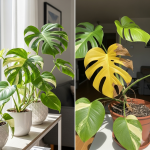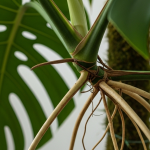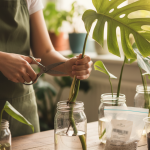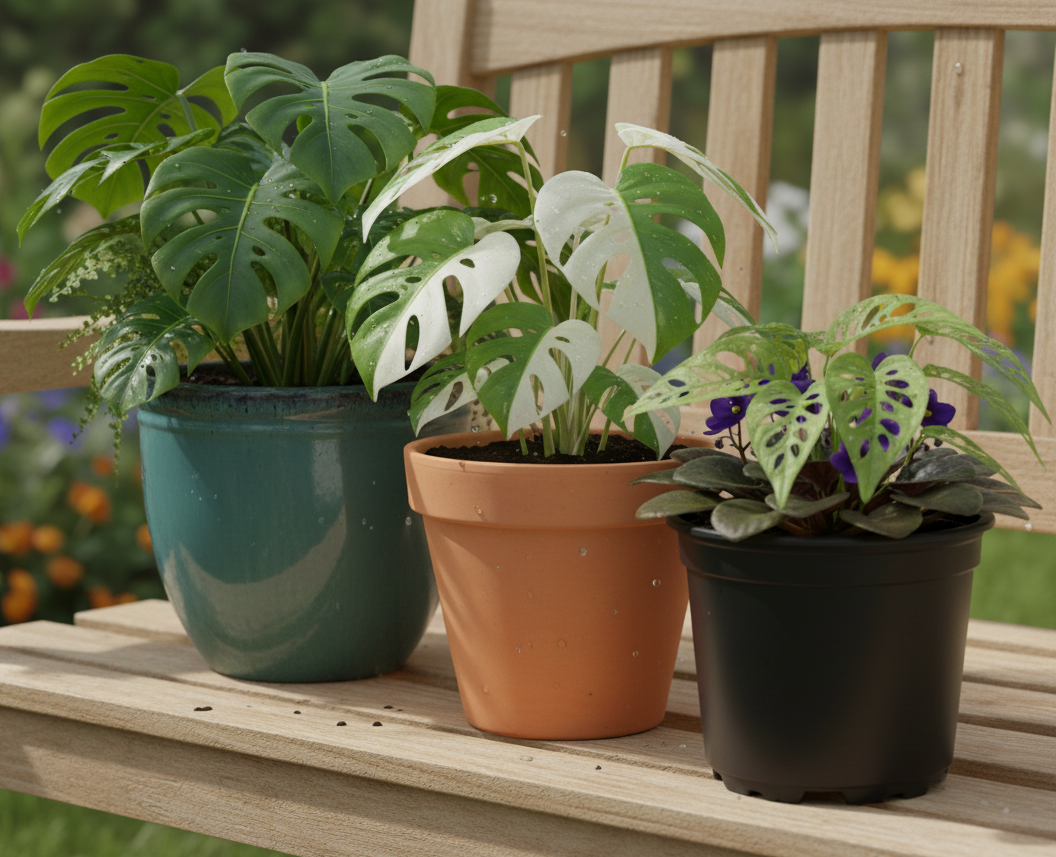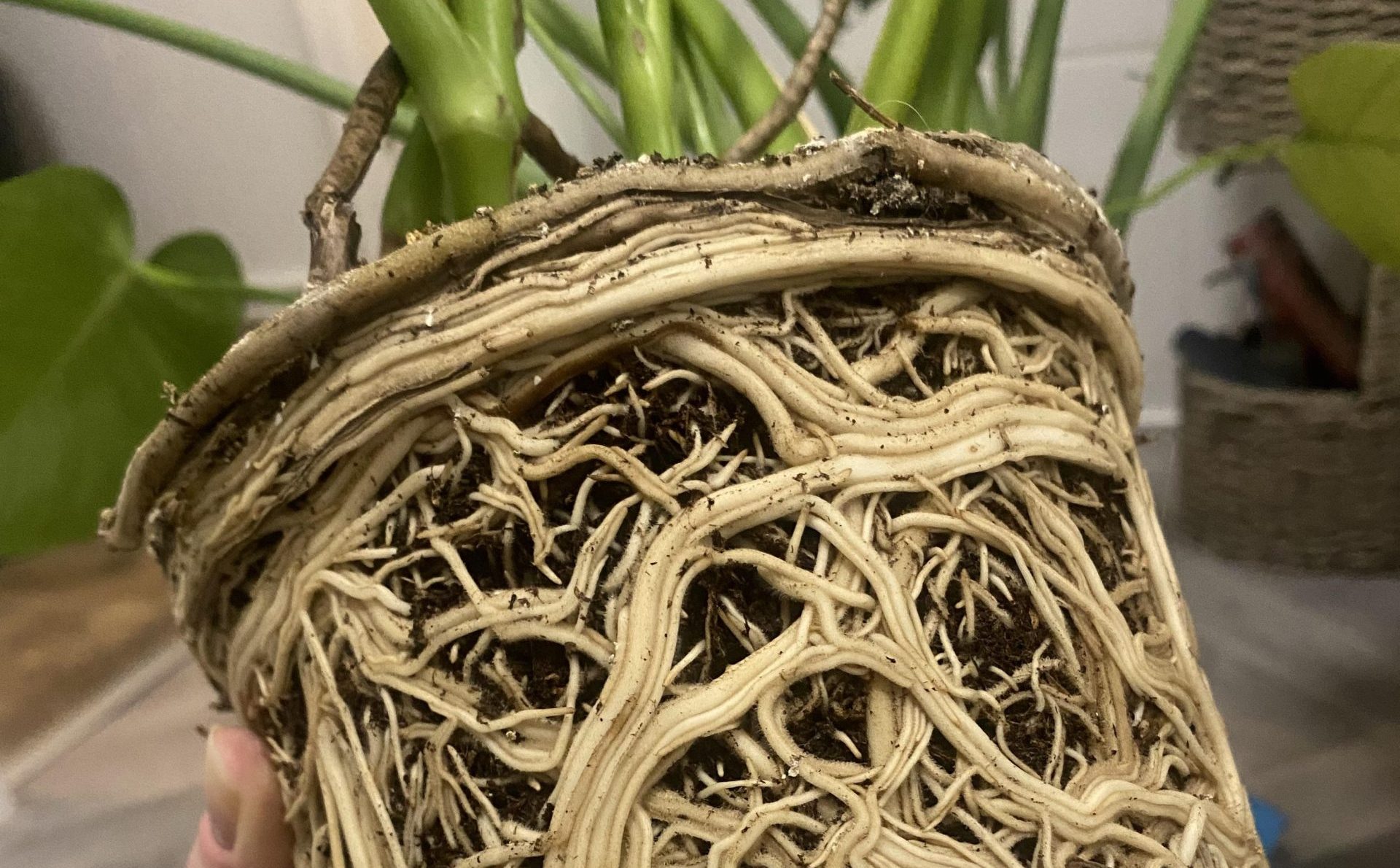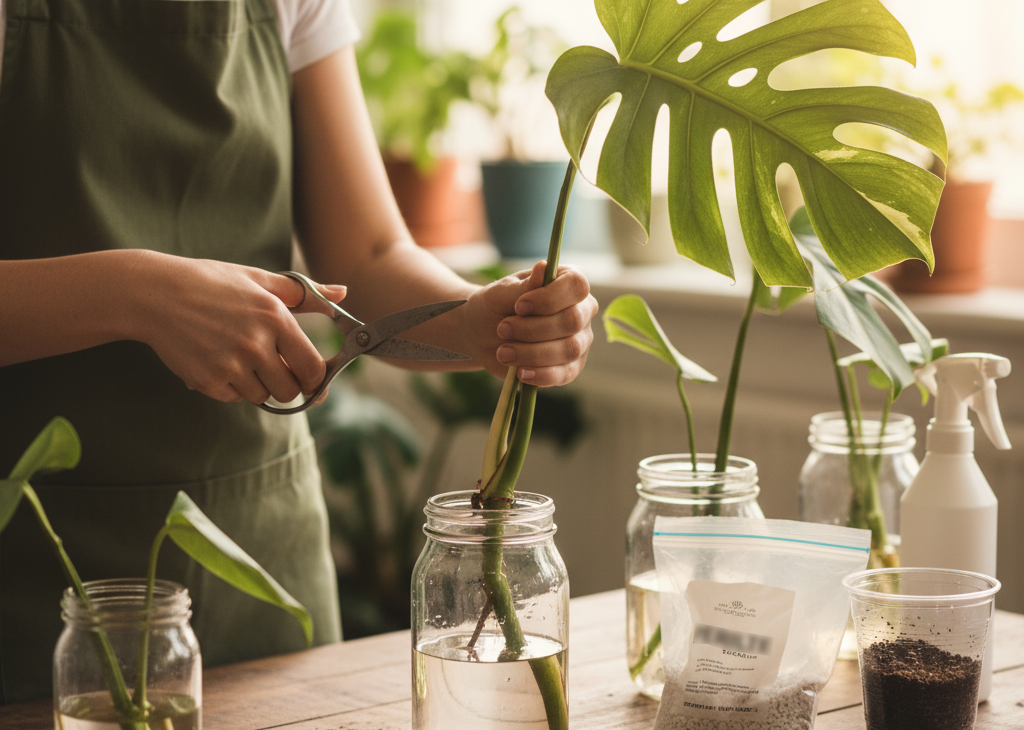Monsteras are one of the most popular houseplants thanks to their dramatic leaves and easygoing nature, but even the hardiest plants can develop issues if not properly cared for. From brown leaf tips to yellowing leaves, wilting, pests, and slow growth, I’ve gathered 22 of the most frequently asked Monstera questions to help you keep your plant thriving.
Whether you’re a beginner or an experienced plant parent, this guide will give you practical solutions and clear explanations for each problem.
1. Can Monstera Deliciosa Live in Water?
Yes! Monsteras can survive in water, but they need nutrients to thrive. Simply placing your plant in a vase with water isn’t enough. To keep your Monstera healthy, use a complete water-soluble fertilizer, adding the recommended amount for hydroponic growing. Ensure the water is refreshed regularly to prevent stagnation, and keep the plant in bright, indirect light.
Hydroponic Monsteras may grow slower at first, but with proper nutrients and attention, they can flourish just as well as soil-grown plants.
2. Does Monstera Need a Lot of Light?
Light is one of the most crucial factors for Monstera growth. These plants prefer bright, indirect light. A large window facing east or west works perfectly. North-facing windows are acceptable if the window is big enough, while south-facing windows might require sheer curtains to diffuse direct sunlight.
Keep the Monstera close to the light source, but avoid touching the glass, as extreme heat or cold from the window can damage leaves. Low-light conditions will slow growth and prevent the iconic leaf fenestrations from forming.
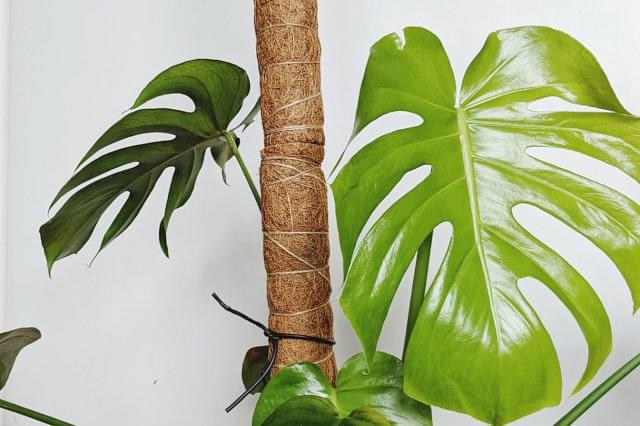
3. How Can I Make My Monstera Grow Faster?
For the fastest growth:
- Light: Place your Monstera in bright, indirect sunlight.
- Temperature: Maintain warm temperatures between 20–30°C (68–86°F).
- Soil: Use a well-draining, airy potting mix.
- Watering: Keep soil consistently moist but not soggy.
- Fertilizer: Apply a balanced, high-quality fertilizer every 4–6 weeks during the growing season.
Avoid shortcuts like overwatering or putting it in low-light conditions. Monsteras are resilient, but good care and patience are the keys to achieving a lush, vigorous plant.
4. Can You Cut Monstera Aerial Roots Off?
Aerial roots help the plant climb and absorb moisture. While you can trim them if they get in the way, leaving them alone usually poses no harm.
If desired, you can guide aerial roots into the soil for extra support and nutrients. Trimming does not harm the plant, but be aware that new aerial roots will continue to grow over time.
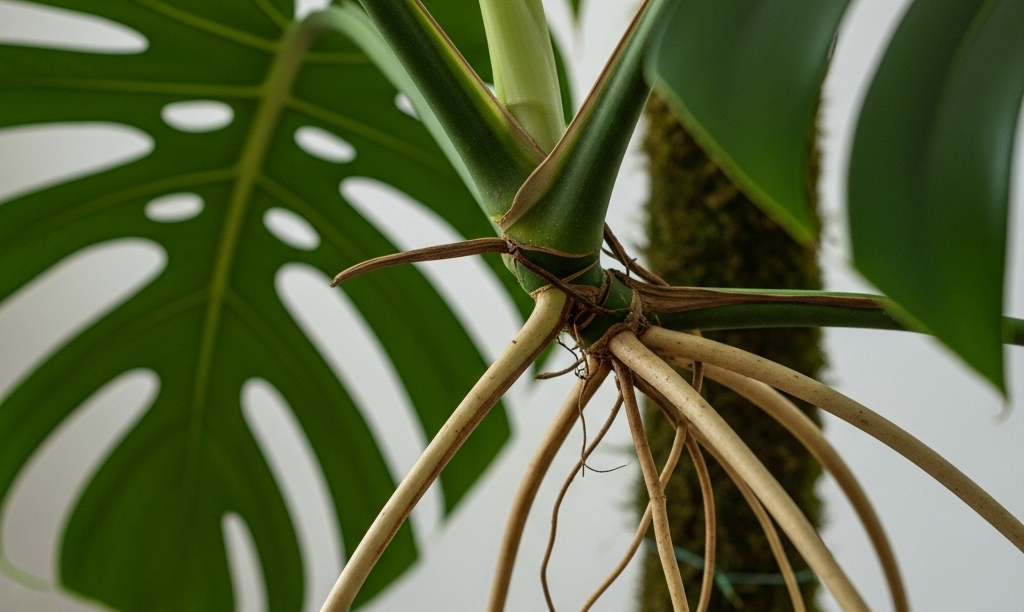
5. Why Are My Monstera’s Leaves Turning Brown?
Brown leaves or tips usually indicate:
- Inconsistent watering: Allowing soil to dry out too much or watering unevenly can cause leaf tips to brown. Always water thoroughly and keep the soil evenly moist.
- Fungal issues: Yellow halos around brown spots may indicate a fungal infection, often from excessive moisture and poor airflow. Remove affected leaves, avoid misting, and ensure proper air circulation.
Brown leaf tips can also result from low humidity or fertilizer burn, so consider your environment and nutrient schedule.
6. How Often Should I Water Monstera Deliciosa?
Watering frequency depends on:
- Pot size and type
- Potting medium
- Light and temperature conditions
Check soil moisture by sticking your finger 1–2 inches into the soil. Water when the top layer is dry, always ensuring the pot has proper drainage. Overwatering is often misunderstood; thorough watering followed by proper drainage prevents root rot.
Avoid relying on moisture meters—they often give inaccurate readings and can lead to overwatering or underwatering.
7. How Can I Grow a Monstrous-Sized Monstera?
Achieving giant Monstera leaves takes:
- Patience
- Consistent care
- Proper support for climbing
Ensure your plant has ideal light, temperature, soil, and nutrition. Over time, Monsteras naturally grow larger, and giving them room to climb with moss poles or stakes will encourage bigger leaves and healthier growth.
8. Why Are New Monstera Leaves Brown or Black Before Unfurling?
Brown or black new leaves often indicate a soil moisture imbalance:
- Soil too dry: The plant cannot support new leaf growth.
- Soil too wet: Root health may be compromised, affecting leaf development.
Always maintain even soil moisture and ensure proper drainage to prevent damage to emerging leaves.
9. Can I Put My Monstera Outside in Summer?
Yes! Monsteras thrive outdoors in warm months but must be hardened off gradually. Start by placing the plant in shade for a few days, then slowly introduce indirect sunlight. Sudden exposure to direct sun can cause sunburn.
Always inspect for pests before bringing your plant back indoors to prevent infestations from outdoor exposure.
10. Why Is My Monstera Wilting?
Wilting usually results from:
- Dry soil: Immediately water thoroughly if soil is bone dry.
- Overwatering/Root rot: If soil is soggy and roots smell rancid, remove damaged roots, repot in fresh, well-draining soil, and reduce watering.
Proper drainage and soil balance are essential to prevent wilting.
11. Why Is My Monstera Getting Yellow Leaves?
Yellowing leaves are often caused by:
- Underwatering: Older leaves yellow first when soil dries out completely.
- Nutrient imbalance or stress: Ensure consistent watering, proper light, and fertilizer.
Monitor your plant regularly to detect yellowing early and adjust care accordingly.
12. What Are the Best Monstera Support Ideas?
- Moss poles: Ideal for one or two vines, providing climbing support and mimicking natural growth.
- Bamboo tripod: For multiple vines, three bamboo stakes tied at the top create a sturdy structure.
- DIY options: Use sturdy sticks, netting, or trellises if moss poles aren’t available.
Supporting your Monstera encourages vertical growth and healthy leaves.
13. Why Are Variegated Monstera Leaves Turning Brown?
Brown leaves in variegated varieties often result from:
- Low light, causing variegated sections to weaken
- Inconsistent watering or dry air
- Overfertilization or leaf burn
Monitor environmental conditions and water carefully to maintain healthy variegation.
14. Do I Have a Monstera Deliciosa or Monstera Borsigiana?
Deliciosa and Borsigiana are very similar, but:
- Deliciosa: Larger leaves, more vigorous growth, slower to develop fenestrations when young
- Borsigiana: Slightly smaller leaves, thinner stems, faster fenestration development
Observing growth patterns and leaf size over time will help identify your plant.
15. Why Does My Monstera Have Black Spots All Over the Leaves?
Black spots can be caused by:
- Cold damage: Exposure to temperatures below 10°C (50°F) can kill leaf tissue, resulting in black spots.
- Fungal infection: Overly wet conditions can promote fungus, particularly on older or shaded leaves.
Damaged leaves cannot be repaired but new growth will appear healthy if the plant’s conditions are corrected.
16. Why Did My Monstera Get Sunburn?
Sunburn occurs when a plant is suddenly exposed to direct sunlight. Signs include bleached, washed-out leaves. Gradually acclimate the plant to sunlight over several days to prevent leaf burn. Once damaged, sunburned leaves cannot recover.
17. What Are Those Little Flies Around My Monstera?
These are likely fungus gnats, drawn to overly wet soil. To control them:
- Let the top layer of soil dry between watering
- Use sticky traps
- Consider soil top dressing with sand or diatomaceous earth
Avoid overwatering to prevent future infestations.
18. Why Don’t My Monstera Leaves Have Holes or Splits?
Young Monstera leaves are naturally solid. Fenestrations (holes and splits) develop as the plant matures. Provide optimal light, nutrition, and support, and fenestrations will appear over time.
19. Why Did My Monstera Develop Root Rot?
Root rot occurs when soil remains waterlogged too long, allowing harmful microbes to attack roots. Prevention tips:
- Use well-draining soil
- Ensure pots have drainage holes
- Water only when the top inch or two of soil is dry
- Maintain proper light and airflow
Address root rot immediately by trimming damaged roots and repotting in fresh soil.
20. What Are the Little Tiny Bumps on My Monstera?
Tiny domes on leaves or stems may indicate scale insects. Remove them manually with your finger or a soft cloth, and treat the plant with insecticidal soap or neem oil. Prompt treatment prevents spread and protects overall plant health.
21. What Are the Fine Webs on My Monstera?
Fine webs indicate a spider mite infestation. Symptoms include tiny discolored spots on leaves and delicate webbing. Treat immediately using insecticidal soap, neem oil, or by rinsing the plant thoroughly with water.
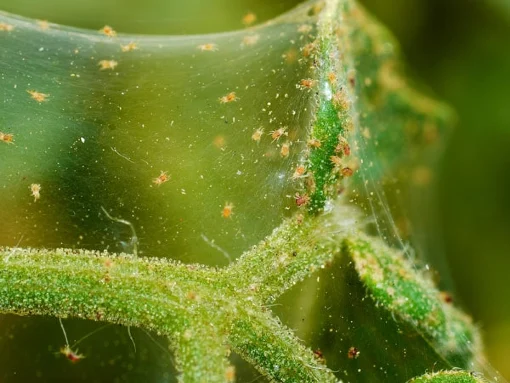
Final Thoughts
Monsteras are resilient, but even the healthiest plants can face challenges if environmental conditions or care practices are off. Proper watering, bright indirect light, nutrient-rich soil, and adequate support will help your Monstera thrive. By understanding common problems—ranging from pests and diseases to leaf damage and root issues—you can confidently care for your plant and enjoy its lush, dramatic growth for years to come.wow every visitor.


